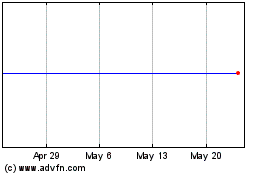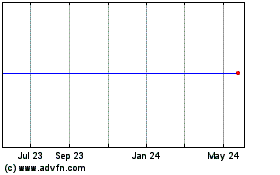Home-Builder Rally Fueled by Low Interest Rates, Millennials
24 December 2019 - 11:29PM
Dow Jones News
By Will Parker
U.S. home builders benefited from low interest rates this year
as housing starts climbed to levels not seen in a decade and
new-home sales surged after a disappointing 2018.
Builder confidence, as measured by the National Association of
Home Builders, is now the highest since 1999. And publicly traded
home-builder stocks beat the S&P 500 average this year, rising
40% as of Dec. 23, compared with the broad index's 29% gain over
the same period.
Home builders cranked up volume partly by focusing on homes more
buyers can afford. Large builders including Meritage Homes Corp.
and MDC Holdings Inc. made strategic shifts to produce a higher
number of less-expensive homes, targeted at a generation of
millennials with lower purchasing power than average buyers in the
past.
In the third quarter of this year, the average price of a
Meritage home fell 4.4% while the number of home orders rose 24%,
driven by demand in the entry-level category.
"You're seeing shifts down in average price," said Jonathan
Boise, a home-builder analyst at Fitch Ratings. "Typically, for the
builders that are focusing on entry-level product, that's resulting
in stronger growth than their peers."
Strong buyer demand for more-affordable homes stoked mergers and
acquisitions. In November, Taylor Morrison Home Corp. said it would
purchase a West Coast competitor, William Lyon Homes, a company
that does more than half of its business in the entry-level market.
Scheduled to close in 2020 and valued at $2.4 billion, the deal was
among the largest announced in the industry this year.
Some home builders and analysts question whether growth will
continue at the current pace next year. Fitch, for example,
predicts new-home sales will only grow 1.5%, compared with 9% in
2019.
Interest rates are expected to remain low, meaning mortgage
costs will still be cheaper than in 2018, a continued incentive for
more buyers to come into the market. And Fannie Mae forecasts that
housing-construction starts will increase 10% next year to reach a
postrecession high, giving supply a needed boost.
But cost increases fueled by labor shortages and regulatory
challenges are making it harder to deliver homes with affordable
price tags, according to builders. Labor costs are going up partly
because home builders are having a hard time recruiting workers in
a strong economy.
"We're fighting the agriculture industry, the restaurant
industry for the same people," said Chuck Fowke, a custom-home
builder in Tampa, Fla. "Today, you've got a lot of young people
going to work for FedEx or Amazon, and a lot of times in our
industry there aren't benefits available for entry-level people
that are starting out."
As a result, residential-construction workers are more likely to
be older than the workforce at large, and the industry continues to
be short 300,000 to 400,000 workers in any given month, according
to Robert Dietz, the National Association of Home Builders' chief
economist. Worker productivity in the sector has been mostly flat
for more than two decades, he said.
Trade concerns remain a problem for the industry. Although
lumber prices have since fallen, a 2018 price increase related to
the Trump administration's Canadian tariffs was enough to raise the
average home construction cost by $9,000, according to the
group.
"Those tariffs are still in place," Mr. Dietz said.
Next year could be riskier for home builders as more companies
move to meet demand from entry-level shoppers, who "typically look
for homes that could be delivered within a short period," according
to a recent Fitch report.
To meet demand, some home builders are planning to build more
"on spec," building homes that don't yet have buyers, as opposed to
building based on customer orders.
Thanks in part to the industry's strong showing in 2019,
analysts said mergers and acquisitions could continue in 2020, with
publicly traded builders accounting for a greater share of total
home-building. Fitch, for example, expects regional builders
focused on the entry level to be attractive targets for
acquisition.
Large builders are looking at companies with landholdings that
are legally ready to be developed. Such deals are a way to navigate
long permitting processes, said Chris Jasinski, managing partner at
JTW Advisors, which advises in home-builder mergers. "Increasingly
it's just another land-acquisition vehicle," he said.
Write to Will Parker at will.parker@wsj.com
(END) Dow Jones Newswires
December 24, 2019 07:14 ET (12:14 GMT)
Copyright (c) 2019 Dow Jones & Company, Inc.
William Lyon Homes (NYSE:WLH)
Historical Stock Chart
From Dec 2024 to Jan 2025

William Lyon Homes (NYSE:WLH)
Historical Stock Chart
From Jan 2024 to Jan 2025
